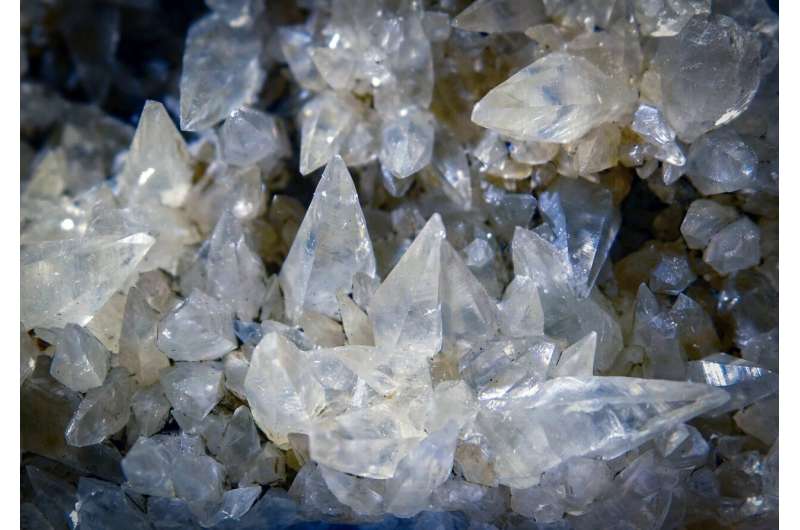This article has been reviewed according to Science X's editorial process and policies. Editors have highlighted the following attributes while ensuring the content's credibility:
fact-checked
peer-reviewed publication
trusted source
proofread
Subsurface microbes capture toxic uranium and remediate groundwater

A new research study describes a previously unknown chemical process for removal of uranium from groundwater. Deep down in the bedrock, in an oxygen-free environment, microbes assist in the process of turning uranium "into rock." This finding might be an important tool for inhibiting the spread of toxic uranium in groundwater.
Uranium is a radioactive element that occurs naturally in the bedrock, and is harmful to humans and ecosystems. Exposure through drinking water, for example from drilled wells in bedrock, may lead to renal and reproductive effects, as well as DNA damage.
"Uranium-rich drinking water is a major global health issue. To inhibit the spread of uranium in groundwater is a topic of high concern," says Henrik Drake, Associate Professor in Environmental Science, Linnaeus University, Sweden, and senior author of the study.
In a 17-year-long experiment, the team of researchers explored deep boreholes drilled into the bedrock, and identified minerals that had entrapped large amounts of uranium. It turned out that microbes living in the oxygen-free environment were the key to the process.
The microbes produce substances that help to transform the uranium, so that it is more easily incorporated into minerals. This sink stabilizes the uranium, and restrain further transport with groundwater.
Ivan Pidchenko, post doctoral fellow at the Linnaeus University, and lead author of the study, explains the discovery: "The findings suggest that naturally occurring bacteria affect the uranium removal. The microbes contribute to form sinks for toxic elements in the subsurface environment. This process has large potential to prevent the spread of hazardous elements in the environment."
The results are important for remediation of contaminated groundwater, but also for spent nuclear fuel repositories.
"Uranium is the main component in spent nuclear fuel that will be deposited in long-term geological storage in deep bedrock systems. Our finding is an additoinal brick to the foundation of long-term safety assessment of geological nuclear repositories planned for construction in Sweden and elsewhere," says Ivan Pidchenko.
The study is published in the journal Communications Earth & Environment.
More information: Ivan N. Pidchenko et al, Deep anoxic aquifers could act as sinks for uranium through microbial-assisted mineral trapping, Communications Earth & Environment (2023). DOI: 10.1038/s43247-023-00767-9
Journal information: Communications Earth & Environment
Provided by Linnaeus University





















